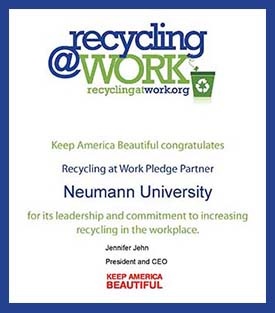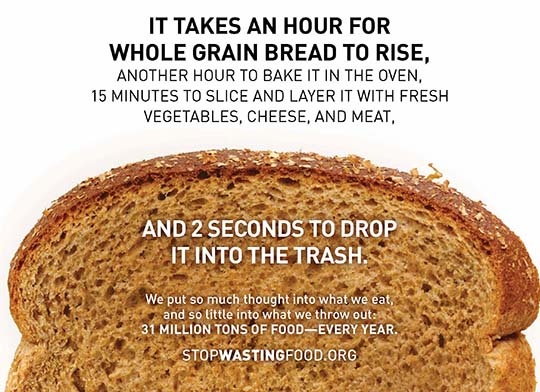 CHALLENGE
CHALLENGE
Stewardship
Submitted by Jason Bell
Member of the Care of Creation
Committee and General Manager
Sodexo Campus Services
Waste Not: How Food Waste Affects Your Environment
Are you aware of the impact wasting food has on the planet? It not only has a financial effect, but an environmental one too. Here at Neumann University we do everything we can to reduce our carbon footprint, educate, and be an environmentally-friendly atmosphere.

Over 36 million tons of food waste reaches landfills each year in the United States
According to the United States Environmentally Protection Agency, food makes up 21% of the wastes deposited in landfills in the United States. When food is disposed in a landfill, it rots and becomes a large source of methane. This results in landfills consuming a major source of human-related methane in the United States, accounting for more than 20 percent of all methane emissions.
Food waste leads to growth of Methane Gas
According to the United Nations Environment Programme (UNEP), methane is one of the most harmful greenhouse gasses that contribute to climate change.
Food waste leads to wasteful use of chemicals like fertilizers and pesticides, more fuel used for transportation, and more rotting food, creating more methane.
Food waste can be linked to Global Warming
According to the National Geographic, one of the first things scientists learned is that there are several greenhouse gases, like methane produced from food waste, responsible for warming.
A combination results from the combustion of fossil fuels in cars, factories and electricity production. Carbon dioxide, also called CO2, is the gas responsible for the most warming. Other contributors include nitrous oxide from fertilizers, gases used for refrigeration and industrial processes, and the loss of forests that would otherwise store CO2.
Neumann University’s Approach to Reduction
of Food Waste
Neumann University Dining Services understands how dangerous wasting food and materials can be to the environment. We consider our school to be an environmentally-friendly university and here is what we are doing to make it possible:
Educational Signage
We believe education is an important tool in all of our lives. We incorporate this by displaying various flyers and posters around campus. Some examples are our “Food for Thought” posters located near the dish return and waste fact inserts in the napkin holders.
Source (Production) Reduction
We continuously cook small batches to maximize speed of service while minimizing production waste. In addition, our grill station and deli are completely made-to-order areas, eliminating production waste.
Weight the Waste Events
Several times a year, to help bring awareness of how much each person can waste, we run a “Weigh the Waste” event. During the event, we physically weigh all of the waste from the customers’ plates right in the dining room. A powerful visual representation of the waste can be seen by all. For our February event, the average waste per customer was 3.04 ounces.
Tray-Free Dining
We don’t use trays in our dining facility. Doing so allows us to have a reduction of 1oz per plate of waste and reduce water, chemical, and power usage associated with cleaning the trays.
Moving forward…
As we move forward, dining services will strive to reduce our waste even further not only through these programs, but by working with SEA Club and campus organizations to create innovative programs to minimize our footprint on the planet.






